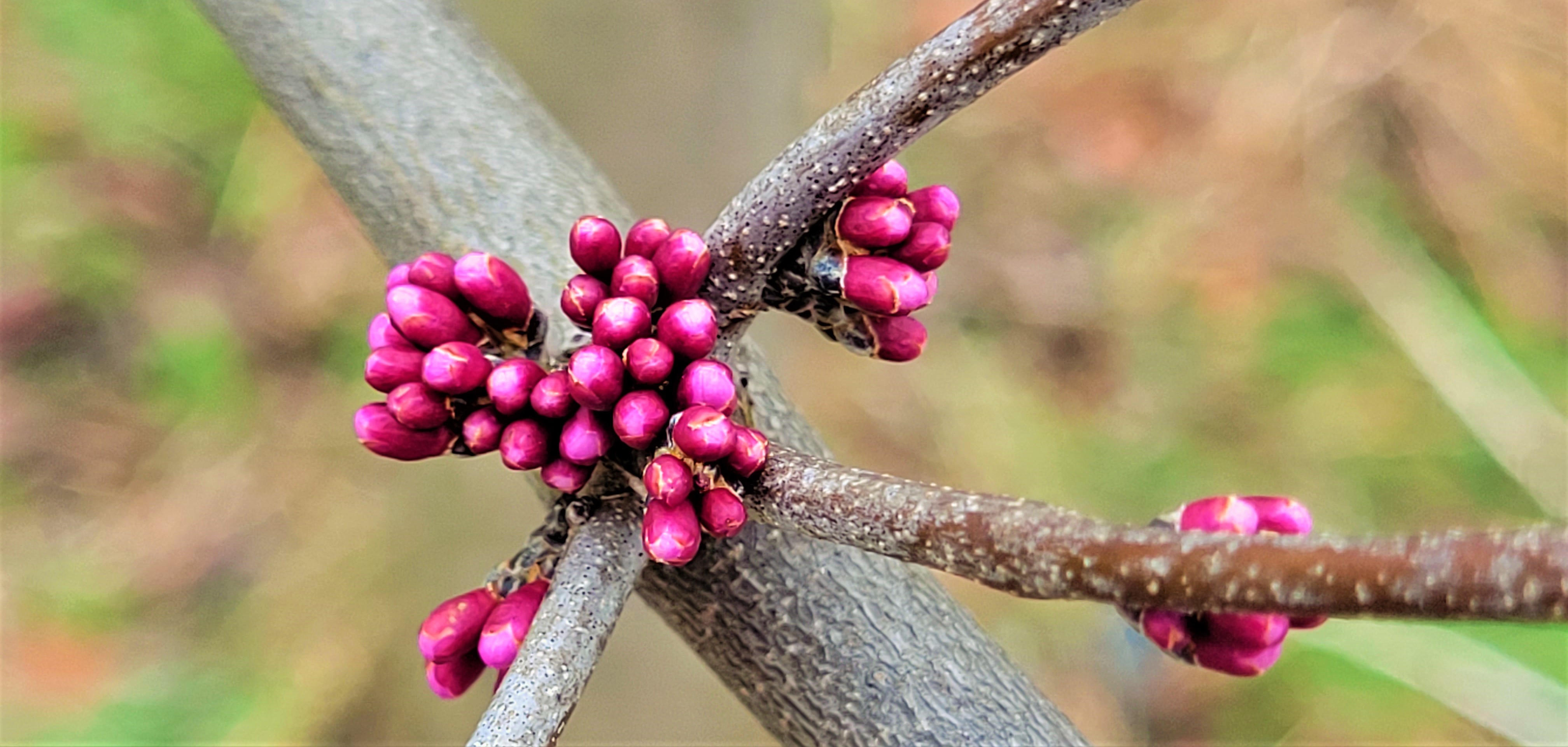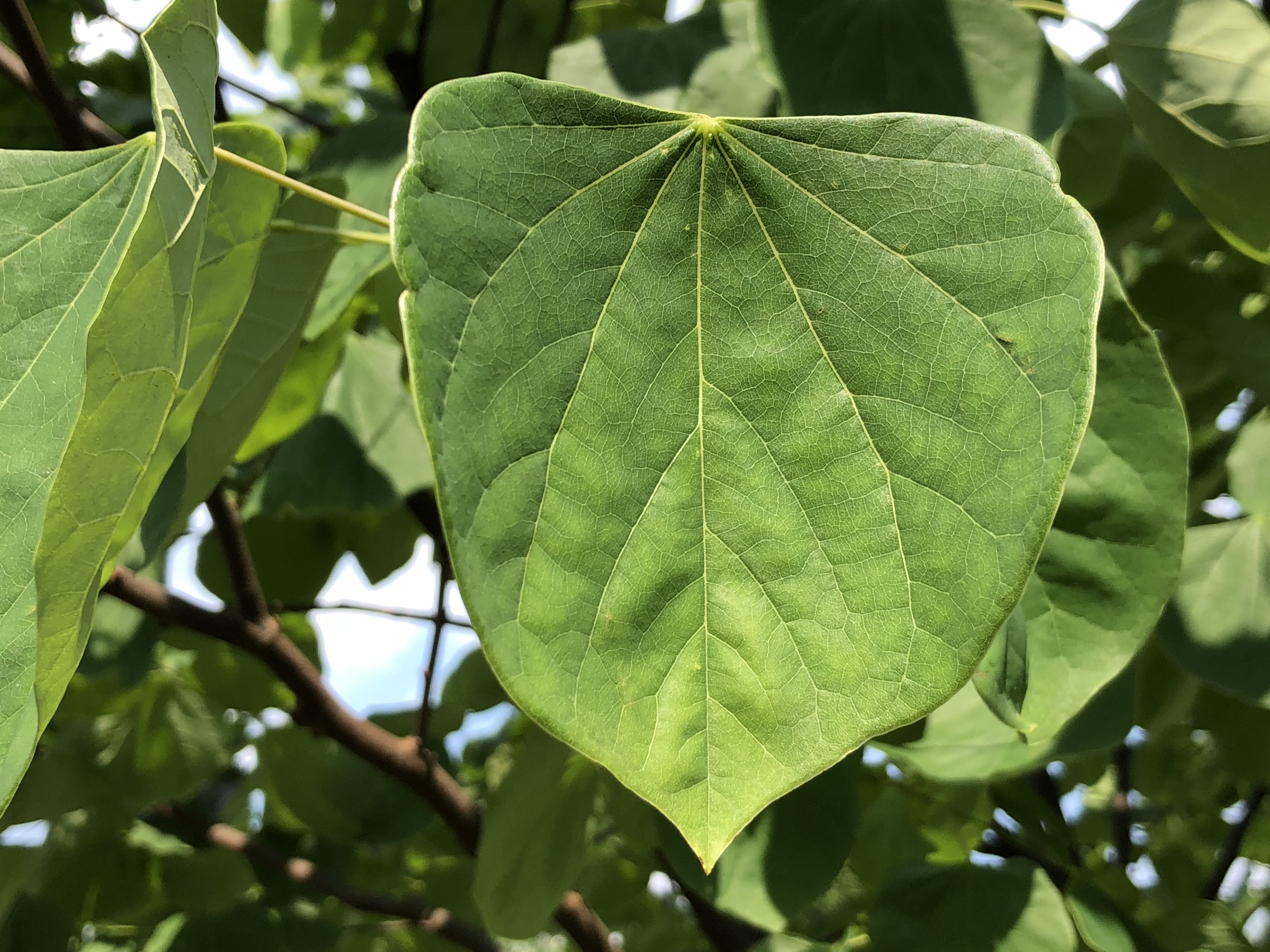Blog

#bioPGH: Eastern Redbud
 A resource of Biophilia: Pittsburgh, #bioPGH is a weekly blog and social media series that aims to encourage both children and adults to reconnect with nature and enjoy what each of our distinctive seasons has to offer.
A resource of Biophilia: Pittsburgh, #bioPGH is a weekly blog and social media series that aims to encourage both children and adults to reconnect with nature and enjoy what each of our distinctive seasons has to offer.
Every morning this week, I’ve noticed a blush of pink on this tree, pale yellows on that shrub, and more bulb flowers emerging from the sleepy, soggy soil. Spring is literally blooming all around us! And with its pink-purple blossoms, one of my favorite native trees to bloom is the eastern redbud (Cercis canadensis). As of posting time, the redbud next to the Center for Sustainable Landscapes is just beginning its flowery show; while we wait for full bloom, let’s learn a bit more about this tree and its history, shall we?

Eastern Redbud blossoms on the tree next to the CSL lagoon.
Compared to some of our oaken giants, Eastern redbuds are a relatively short tree ultimately measuring 20‒30' tall. They have cordate (heart-shaped) leaves, and those delightful spring flowers that have a range of pink-purple hues. The tree can also grow in either full or partial sun and in multiple soil types, making it an easy tree for anyone looking to add native trees to a space (and the eastern redbud has been a Phipps Annual Top Ten Sustainable Plant partly for that reason).

Redbud leaves. Image credit: Wikimedia User Famartin, CC-BY-SA-4.0
If you’ve traveled to the American Southwest and into Mexico, you might have noticed a smaller tree that looks strikingly similar to our redbud; and that is because three varieties exist: Cercis canadensis var. canadensis, Cercis canadensis var. texensis, and Cercis canadensis var. Mexicana. Our canadensis is the largest of the three, with the varieties shrinking in size as we move southward. There is also a “sibling” species in the West, Cercis orbiculata, appropriately named the Western Redbud.
If you enjoy quick dives into deep history, there is another reason to be fascinated with these trees: our modern eastern redbud trees have a story to tell about their experience in the last Ice Age! During the past periods of glaciation, the amount of ice covering the Earth was not temporally uniform. Glaciers built up and melted and built and melted over a period of tens of thousands of years. About 20,000 years ago, the world experienced the Last Glacial Maximum, meaning the most recent time that ice age glaciers were at their largest; it is in this space that we can learn something fascinating about our eastern redbuds. Based on genetic patterns observed from eastern redbuds across the US, it appears that our modern redbud trees are descended from a bottlenecked population during the last glacial maximum — meaning a relatively small number of trees survived as refuge populations. Then, once the last glaciers began retreating, eastern redbuds began expanding their range across North America again. Since redbuds cannot self-pollinate, pollinators had to do the job, which helped mix up DNA between those surviving plants, and over time, two genetically distinguishable populations came to exist from that group of Ice Age survivors. And our modern trees today still show the complex genetic hallmarks of those fascinating events. Science!
Well, enjoy these Ice Age descendants over the next few weeks as our local eastern redbuds bloom. And if you have a moment, pause to wonder at how many spring seasons this species has seen over the millennia.
Resources
Arbor Day Foundation – Eastern Redbud
Lady Bird Johnson Wildflower Center – Eastern Redbud
Image Credits: Cover, modified from Wikimedia User Famartin, CC-BY-SA-4.0; header, Maria Wheeler-Dubas

